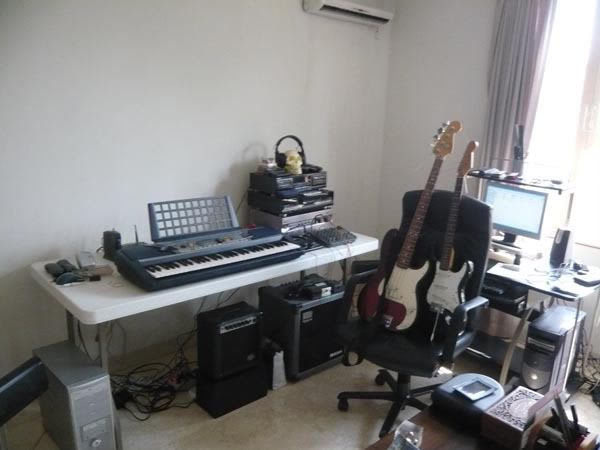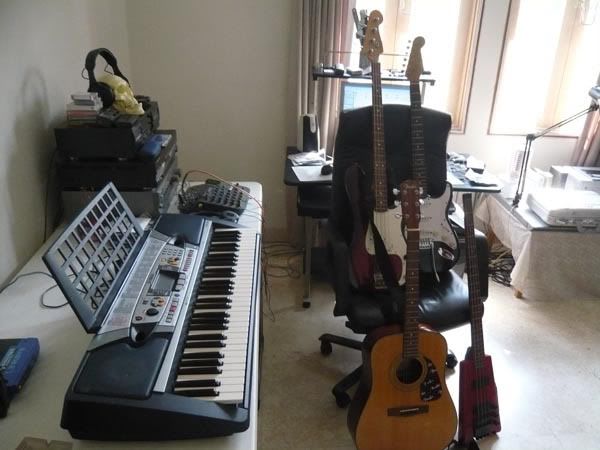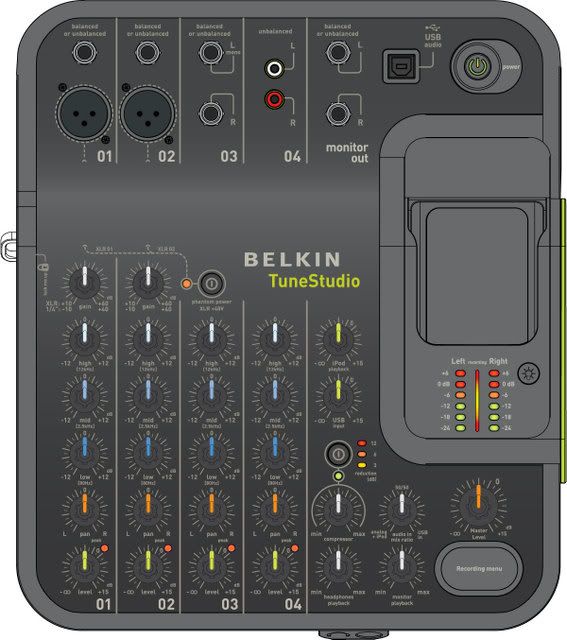
On composing, something will spark the process and I tend to mess about with either the bass or acoustic, trying things out, until I get a melody, be it a few notes or a riff, that “work”.
This phrase has that “I can do something with this” feel to it. Expanding on the theme is more difficult that the creation of the original phrase itself as there are many ways to destroy a good thing. Bits and pieces are tried, added, discarded until there is the hint of a composition arranged.
With the theme developed, there is a question of “where within the structure of this piece” will the theme sit, is it at the beginning, the middle or the end? Once established , developing the “missing bits” tales place and the bones of a tune start becoming evident.
This is the box of tricks that I recently bought which now simplifies the whole process!
As to the music itself, I cheat. The original tunes and structures are mine, but due to an injury to my left hand many years ago I no longer have the strength to play the guitar for any extended length of time. Thus, phrases are played into the computer in slow time and recorded as a track. Once in the computer I have a collection off effects which can be applied, some of which speed the track up, others apply effects like flange, phase, distortion, echo, delays etc which give the track its unique sound.

Drum beats and patterns are programmed through a drum computer, or commercial samples (recordings from other artists) are used to create the rhythm components and the song develops a more formalised structure. These are added as a collection of tracks with the drum patterns possibly taking up to twenty unique tracks off the recording.
At this point, the flesh of the song is added to the bones. For this, there are many options available and the track can be enhanced by use of commercial samples, these can be downloaded from the net or bought on CD (yes, pirated from Ratu Plaza as there is no legitimate source in Jakarta).
These samples include keyboards, sound effects, wind or brass instruments etc which are added track by track to the composition. It is then when I review the original track which was the source of the song and if there is a commercial sample available which sounds more professional, I will insert the sample and remove my playing from the track altogether.

When the composition is theoretically complete in a musical sense, it is time to mix volumes of each track (possibly 50-70 individual tracks) and decide where they sit in the soundscape ie, do they stay on the left / right side, do they move from channel to channel, will they sneak up within the song and fade away, and more until what sounds like a professional mix is achieved.
Much of what I am doing, is what is being done in professional studios worldwide by even the biggest of performers. These days, the finished piece is more cut and paste than “live recordings”.
The average length of time (for me anyway) from start to finish can be up to three months, and even then, the piece may evolve further after I consider it finished as I feel that additional elements can a be added or existing elements removed.
Having said that, this technique allows people like myself who can no longer play live or who do not have the necessary skills to play every instrument known to man to express themselves and create “pieces” which are, for the most part for their own satisfaction rather than seeking adulation.
Now where did I leave that plectrum……..
As to the music itself, I cheat. The original tunes and structures are mine, but due to an injury to my left hand many years ago I no longer have the strength to play the guitar for any extended length of time. Thus, phrases are played into the computer in slow time and recorded as a track. Once in the computer I have a collection off effects which can be applied, some of which speed the track up, others apply effects like flange, phase, distortion, echo, delays etc which give the track its unique sound.

Drum beats and patterns are programmed through a drum computer, or commercial samples (recordings from other artists) are used to create the rhythm components and the song develops a more formalised structure. These are added as a collection of tracks with the drum patterns possibly taking up to twenty unique tracks off the recording.
At this point, the flesh of the song is added to the bones. For this, there are many options available and the track can be enhanced by use of commercial samples, these can be downloaded from the net or bought on CD (yes, pirated from Ratu Plaza as there is no legitimate source in Jakarta).
These samples include keyboards, sound effects, wind or brass instruments etc which are added track by track to the composition. It is then when I review the original track which was the source of the song and if there is a commercial sample available which sounds more professional, I will insert the sample and remove my playing from the track altogether.

When the composition is theoretically complete in a musical sense, it is time to mix volumes of each track (possibly 50-70 individual tracks) and decide where they sit in the soundscape ie, do they stay on the left / right side, do they move from channel to channel, will they sneak up within the song and fade away, and more until what sounds like a professional mix is achieved.
Much of what I am doing, is what is being done in professional studios worldwide by even the biggest of performers. These days, the finished piece is more cut and paste than “live recordings”.
The average length of time (for me anyway) from start to finish can be up to three months, and even then, the piece may evolve further after I consider it finished as I feel that additional elements can a be added or existing elements removed.
Having said that, this technique allows people like myself who can no longer play live or who do not have the necessary skills to play every instrument known to man to express themselves and create “pieces” which are, for the most part for their own satisfaction rather than seeking adulation.
Now where did I leave that plectrum……..

No comments:
Post a Comment